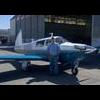Descent rate determinations
-
Members Online
- PeytonM
- 201er
- AndreiC
- exM20K
- 802flyer
- Philthe123
- FoxMike
- clh
- glenn reynolds
- kaba
- N201MKTurbo
- natdm
- pirate
- Aerodon
- Carden260
- AspiringOwner
- Sherifferic
- Florian Guthardt
- BillyT0020
- ThespinDotor
- RightrudderM20E
- Crawfish
- BlueMoon
- Steve Dawson
- philiplane
- Patrick Horan
- TCC
- donkaye
- gacoon
- ttflyer
- amillet
- Jim Peace
- Shadrach
- Bobaran
- ckb


Recommended Posts
Join the conversation
You can post now and register later. If you have an account, sign in now to post with your account.